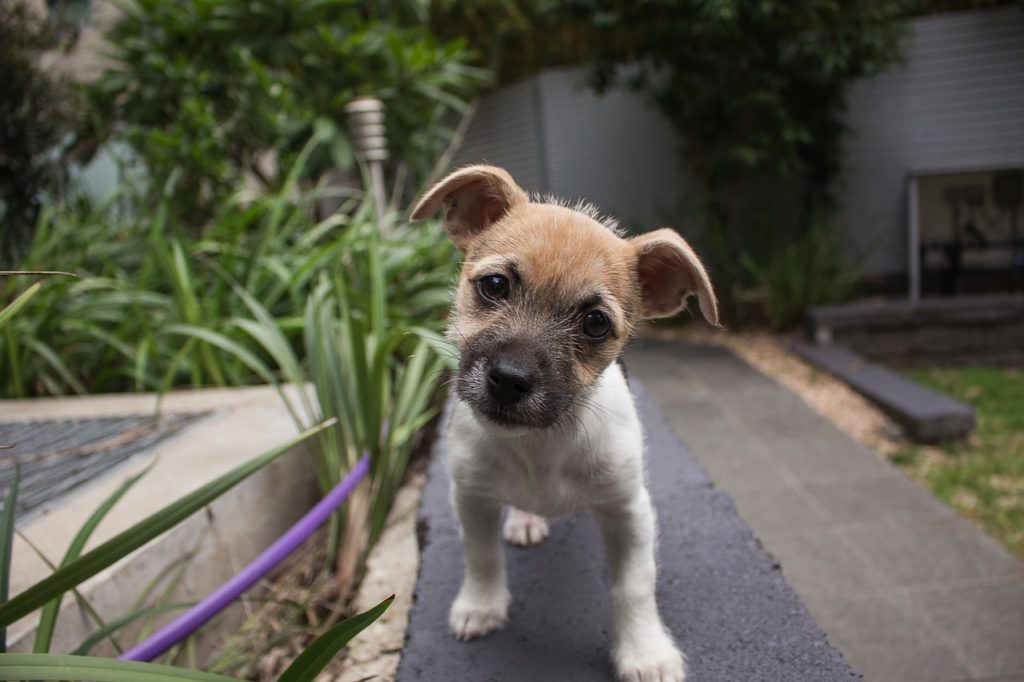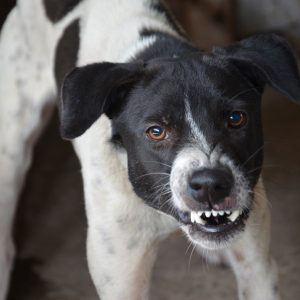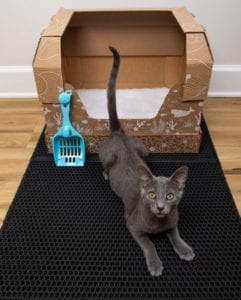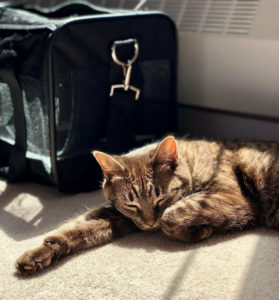Let’s face it – our dogs do some pretty adorable things. They investigate everything with canine curiosity. And when something strikes their fancy, they bounce around in excitement. (We may not always approve of their interests, but you can’t fault their enthusiasm) They rush in to give us kisses. And then there’s the ultimate in doggie cuteness: the head tilt. Even if you’re not a dog-lover, you have to admit you smile when you see that quizzical pose. But have you ever considered why dogs tilt their heads? Are they TRYING to get us to smile, or is it something more? Maybe it’s taking all the fun out of things, but we’re going to get into the science of the doggie head tilt to find out.
The Head Tilt
Ask a dog owner, and they can describe how dogs tilt their heads without a problem. The degree of tilt may change, but the rest of the pose remains the same. Your pup turns their face up slightly to meet yours. There’s a curious, inquisitive shine in their eyes. And their ears perk up just enough to catch whatever sounds you’re making.
The description of the canine head tilt provides clues as to WHY dogs tilt their heads. And while no one’s going to argue about it being anything less than adorable, there’s more going on when your dog performs the behavior. Especially when you start to find out other animals do the same thing.

Why Dogs Tilt Their Heads
Realistically, you may have never considered WHY your dog tilts their head. But I’m willing to bet you have a camera roll full of the photos. Our Greyhound tilts her head at new sounds, when we ask if wants to go to “Grandma and Grandpa’s,” or if she sees something unusual. It’s the only time her ears perk up (so, of course, we have to get photos).
It’s a common canine behavior, and people have plenty of theories. As Dr. Jill Goldman, a Certified Applied Animal Behaviorist, admits, “There is a possibility of several factors, and visual might very well be one, as well as auditory factors. So, it’s hard to say which one is the winner. But although it happens spontaneously, it most likely repeats because it’s positively reinforced.”
Why Dogs Tilt Their Heads: Hearing
In a contest of hearing ability, dogs beat us every time. They pick up frequencies above our natural range. But we get one tiny advantage over our canine companions: we don’t need to turn our heads to hear. Due to our pinna or external ear’s design, we can hear sounds whether they’re in front of us, behind us, or next to us – all while standing perfectly still. Dogs? They can’t.
A dog’s pinna comes in the form of an ear flap. And depending on the breed, the ear flap may partially or FULLY cover the ear canal. So if they want to figure out which direction a sound is coming from, they need to turn their head. (See where we’re going?) We can’t move our pinna, but dogs CAN. Those ear flaps lift and rotate. If a dog needs to focus on a sound, they’ll perk up their ears and tilt their head in the proper direction. The ear flap catches the noise, directs it into the middle ear through the inner ear, and the brain can process the signals.
When dogs tilt their heads, there’s a good chance they’re focusing on your words (or whatever they’re looking at). This is why you see those ears come up. And you usually notice an intent focus in the eyes at the same time. And since the muscles that control the middle ear also adjust the facial muscles, you get that doggie expression of, “What’s happening?” They’re processing what they’re hearing.
Why Dogs Tilt Their Heads: Sight
We have strong bonds with our dogs. And they pick up cues from us to understand what we’re asking of them. They understand the changes in the inflection of our voice (or the frequency in our tone – such as when we use “baby talk”). But they ALSO read our facial expressions, how we move our eyes, and how we hold our bodies. According to Dr. Kun Guo at the University of Lincoln, dogs are the only animals that can read emotion in our faces. They put everything together to comprehend what we’re saying (or NOT saying). And when dogs tilt their heads? Sometimes it’s because they need to adjust their vision.
Some dog breeds have more prominent muzzles than others. And a muzzle obscures the view directly in front of their eyes. Don’t believe me? Try this little experiment:
- Make a fist with your hand.
- Place it in front of your nose.
- Walk around and note the difference in what’s in front of you.
Weird, right? You have to turn your head to see what’s there. (I had a sinus procedure where I had to wear a bandage over my nose for a week, and it drove me nuts)
That’s what it’s like for Greyhounds and other sighthounds that have LONG snouts. On the other hand, brachycephalic dogs, such as Pugs, have almost no muzzle and don’t have as much trouble seeing what’s in front of them. Dr. Stanley Coren performed a study that showed 71% of dogs with larger muzzles tilted their heads, while only 52% of smaller-muzzled dogs did the same.
Why Dogs Tilt Their Heads: Intelligence
Not every canine out their cocks their head to the side. But if you start to pay attention to dogs that tilt their heads, you notice a trend. They’re the ones with the most sensitivity. Dogs who pay attention to novel sounds (which means they received proper socialization as puppies). And they have a tight, emotional bond with their owner. In short, they’re dogs with a high degree of intelligence.
When dogs tilt their heads, they’re demonstrating curiosity. This is why you may see your dog show the behavior towards the television, something they encounter outside, or even other dogs. They’re trying to work out what’s going on. “It could just be a quizzical expression to something they don’t quite understand. People do exactly the same thing. It’s like a human shrug,” says Dr. Nicholas Dodman, Veterinary Behaviorist and Professor Emeritus at the Cummings School of Veterinary Medicine at Tufts University.
Why Dogs Tilt Their Heads: Positive Reinforcement
Of course, probably one of the biggest drives behind why dogs tilt their heads comes from us. What’s the first thing we do when we see that adorable pose? We coo, grab the camera, offer treats, or mimic the pose ourselves. In other words, we offer positive reinforcement to a natural behavior. And dogs LOVE things that make them – and us – happy.
And when do we often see dogs tilt their heads? When we use our brightest tones of voice and ask them questions they WANT to hear:
- “Walk?”
- “Do you want a treat?”
- “Who wants a treat?”
- “Go in the car?”
We don’t usually think to use the same tone when we say, “Who wants to go to the vet?” Which is why you don’t see the cute pose when you ask the question. We’ve failed on that positive reinforcement – so our dogs hightail it for their crate.

The Unwanted Head Tilt
Unfortunately, some dogs tilt their heads for more sinister reasons. A head tilt that persists can indicate a medical problem that needs veterinary intervention. The middle ear and brain form the vestibular system, which accounts for your dog’s (well, any animal’s) sense of balance. And when balance goes wrong, you’ll often see your dog holding their head tilted to the side for much longer than a cute moment.
Problems that affect the vestibular system include:
- Brain disorders
- Ear infections
- Head trauma
- Horner’s Syndrome
- Hypothyroidism
- Thiamine deficiency
- Tumors
- Vestibular disease (this can be idiopathic – meaning the cause is unknown)
If you’re noticing a constant or frequent head tilt, you need to make an appointment with your veterinarian right away. They’ll help you get the problem diagnosed and on the road to recovery.
Too Cute!
Everyone loves when dogs tilt their heads. And whether they’re doing it to hear us better, focus on our expressions, or because we’ve encouraged the behavior, nothing will make it less adorable. Or maybe your little Einstein is hard at work, figuring out what’s going on in front of them. As long as the head tilt isn’t becoming a constant problem, you can continue to smile and let it warm your heart.
And don’t forget to snap those pictures!












No comment yet, add your voice below!